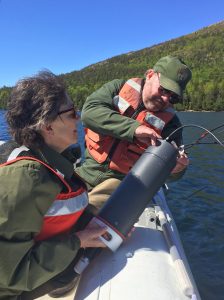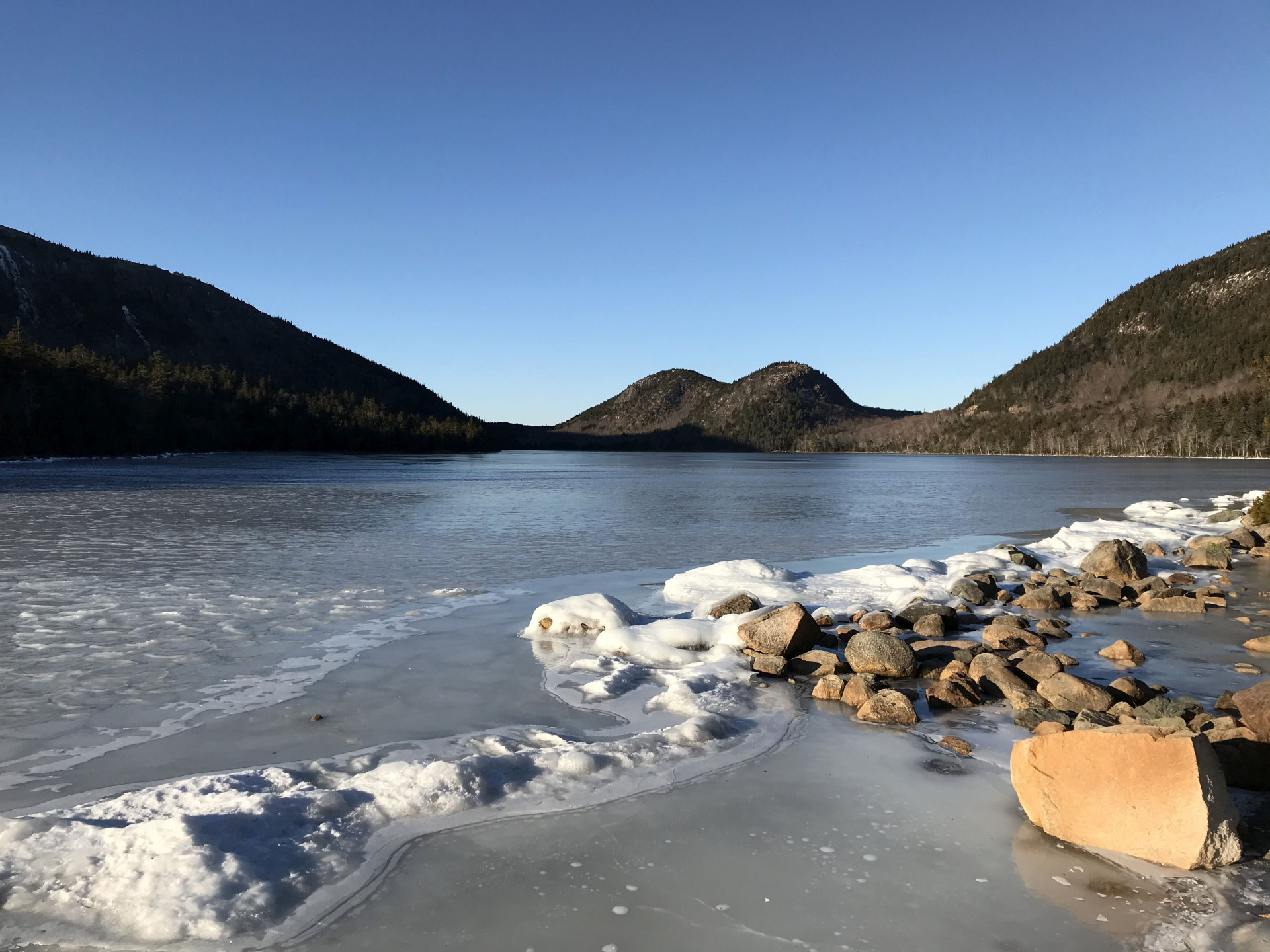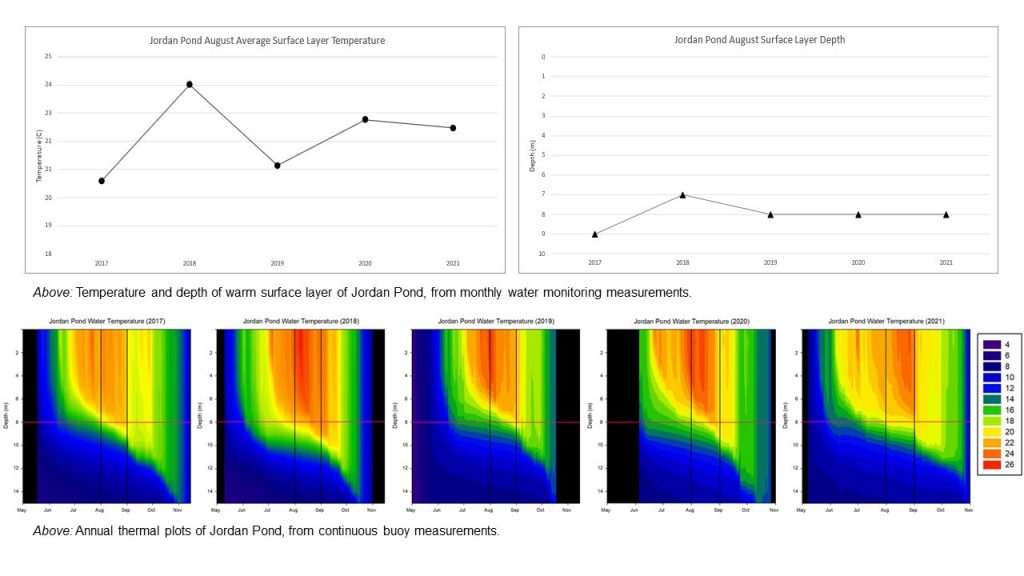Warmer Winters Lead to Shorter Seasons of Ice Cover on Jordan Pond
March 10th, 2023
March 10th, 2023
This article is part of a series highlighting the Jordan Pond Water Quality Project and the monitoring buoy that continuously records physical and chemical conditions in the pond. Read the full series at friendsofacadia.org/buoy
BY BILL GAWLEY

Rebecca Cole-Will and Bill Gawley install the datalogger that stores high-resolution water quality data in the Jordan Pond buoy. (Photo courtesy Judy Hazen-Connery/NPS)
On its surface, ice matters a great deal to winter skaters, people who ice fish, and wildlife that appreciates a winter shortcut from one side of the pond to the next. But ice cover on a lake or pond impacts the ecosystems and water quality underneath, too.
Acadia’s Jordan Pond is typically covered with ice from early January to early April, but there has been considerable variation in the timing and duration over the past 30 years.
The earliest day Jordan Pond froze for the winter was December 18, 1989. The longest period of ice cover was 115 days, in 1992, when the first day of fully open water was April 26. In 2013 the lake never fully froze over!
In recent years, warmer winters have led to shorter seasons of ice cover and earlier open-water dates. These changes can affect Jordan Pond’s water temperature throughout the year, allowing it to warm faster with earlier exposure to sunlight, while spring winds mix this warmed surface water into the cooler, deeper water. In turn, temperature affects almost every aspect of lake-water chemistry, physical properties, and ecosystems.
Warmer water can increase algae growth, including certain species that cause harmful algal blooms, which can have severe impacts on water quality, human health, and aquatic ecosystems and increase the need for drinking water treatment.
Many freshwater animal and plant species can only survive in certain water-temperature ranges, so as temperature rises, cold- and cool-water fish may be replaced by other species better adapted to warmer water, including invasive species.

An icy Jordan Pond. (Photo courtesy Bill Gawley)
To better understand and anticipate such threats, Acadia National Park resource managers are keenly interested in learning how quickly and to what extent water temperatures in the park’s lakes are changing. The continuous monitoring buoy maintained by the Jordan Pond Water Quality Project is providing some of this crucial information.
Prior to deploying the buoy in 2013, park staff measured water temperature at each meter of Jordan Pond’s water column only once a month. But the water temperature changes significantly throughout the month, so these single measurements were mere snapshots of conditions during the monitoring visit. The monitoring buoy collects temperature (and other) measurements every 15 minutes throughout its 6-month deployment and provides a far more complete picture of how water temperature changes from the lake surface down to the lowest sensor at about 50 feet.
The graphs below show the contrast between the two monitoring methods over a 5-year period.

So how is Jordan Pond’s water temperature changing? That depends on where and when you measure. The lake’s surface water temperature, down to about 35 feet, varies drastically throughout the season as it is influenced by air temperature, but annual averages have remained surprisingly stable according to the past 9 years of data from the buoy.
The story is slightly different when you look at individual months — average August surface layer temperatures have increased by close to 2 degrees Celsius since 2013. The deeper layer of lake water —from about 50 feet to the bottom at 150 feet — has much smaller temperature fluctuations throughout the year, but annual average temperatures have increased by almost 2 degrees. This is significant, because the deeper layer constitutes up to two-thirds of the total volume of Jordan Pond.
Is this a cause for concern? Thankfully, Jordan Pond’s otherwise outstanding water quality makes it more resilient to many of the detrimental effects caused by warming temperatures in more impaired lakes. However, awareness that these changes are occurring makes it more important that we continue monitoring and researching efforts to fully understand the threats and strengthen our stewardship activities in order to better protect this iconic resource.
BILL GAWLEY manages the Air and Water Resources program at Acadia National Park and has been monitoring Acadia’s air and water quality since 1993